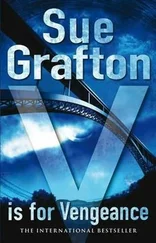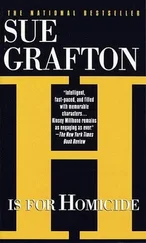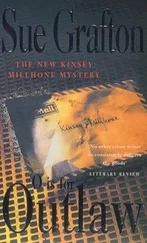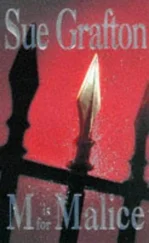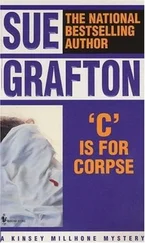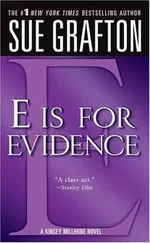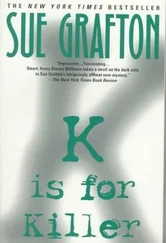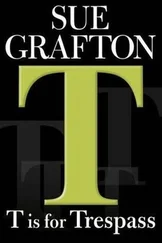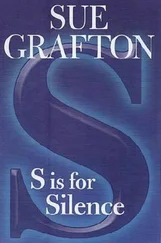On the wall to my immediate right, the floor-to-ceiling shelves were lined with telephone directories for numerous California cities and towns. The shelves below were filled with additional phone books from assorted cities across the country. I circled the periphery in search of the Polk directory, the Haines, and the six decades’ worth of Santa Teresa city directories that I knew were housed nearby.
The Polk and the Haines are both crisscross directories that offer a means of discovering and cross-referencing the name, address, and occupation of any individual or business in a given area. Where the target is a business, you can also determine the number of people employed and any relevant sales figures. If, as in my case, all you have is a name, you can usually find the person’s home address. If all you have is an address, you can pick up the name of the occupant. By shifting to the city directory, you can check the list of residents against a second alphabetical listing of street addresses. The house numbers are sequential, providing the name and phone number of the resident at any particular address. While the information is redundant, each category supplies tidbits that can be pieced together to form a quick sketch.
I pulled both the Polk and the Haines for 1966 and then selected three city directories-1965, 1966, and 1967-which I carried to the table. I moved my shoulder bag to the floor and pulled up the chair. From the depths of my bag, I removed a notebook and a ballpoint pen. There was only one family named Kirkendall: Keith (CPA) and Margie (grphic dsgnr) at 625 Ramona Road. I made a note of the address and added the names and the house numbers of the neighbors on each side. In Horton Ravine, the properties range from three- to ten-acre parcels, with some larger ones as well. There are no sidewalks and the houses are set back from the road. I couldn’t picture visits back and forth between neighbors or idle gossip across a side-yard fence. I’d never seen anyone seated on the porches visible from the road. My guess was that people were more likely to get acquainted by way of church, the country club, or the numerous civic organizations around town.
While I was doing a paper search, I looked for Michael Sutton’s former address on Via Ynez. I copied the house number in my notebook and then switched over to the Polk, where I picked up the old phone number. In 1967, when Mary Claire Fitzhugh was kidnapped, her family lived on Via Dulcinea. Again, in the interest of being thorough, I found the names of the neighbors on each side. After a twenty-one-year gap, much of the information I’d gleaned would be out of date, but having the names on hand might save me a return trip. I checked the most recent telephone book and made a note of the one listing that was still good.
I replaced the various directories and went downstairs to the periodicals department. At the back desk, I asked the librarian for microfilm copies of the Santa Teresa Dispatch, covering the stretch of dates that encompassed the Mary Claire Fitzhugh kidnapping. I wanted to review the news coverage of the crime before I did anything else. Sutton had sketched in certain significant points, but his prime focus was the time frame and mine was the bigger picture, including details he might have missed.
The librarian returned with two boxed rolls of microfilm, dated July 1-31, 1967, and August 1-31, 1967. I took a seat at a nearby table, flipped on the microfilm reader, threaded the reel under the glass plate, and caught the end piece on the roller. I pressed the button and watched news pages whiz by at a rate that made me dizzy. I paused now and then to check the date line at the top of the page and when I neared the 19th of July, I slowed and began to look in earnest.
The kidnapping garnered front-page headlines for the first time on Sunday, July 23, and occupied center stage for the following ten days, though the account in each edition was much the same. It was clear the FBI had kept a tight rein on the information released to the public, which forced the reporters into endless repetitions of the same few facts. The basics were much as Sutton had related, though I picked up several details he hadn’t mentioned. Mary Claire vanished on Wednesday morning, July 19, though the crime wasn’t reported until four days later. In that interval, which included the whole of Friday and much of Saturday, the police and the FBI had stepped in and put a lock on the case, ensuring that no whisper of the crime reached the public. Events leading up to the abduction were spelled out, but there was little information from that point on.
I started taking notes, in part to distract myself from the specifics of what went down. Even in the flat who, what, where, when, and how of journalism, the story made something in my chest squeeze down. What made the sensation worse was the black-and-white photograph of Mary Claire that appeared with every article. Her gaze was so direct I felt I was looking into her soul. Her smile was sunny, her eyes shaded by pale bangs. The rest of her hair was held back on each side with a plastic barrette. The dress she wore had ruffles down the front, tiny pearl buttons, and puffed sleeves over arms plump enough to kiss. The photographer had given her a stuffed bunny to hold so the occasion might have been Easter of that year.
I remembered reading about her disappearance at the time, but I hadn’t understood the enormity of the crime. What had she ever done to warrant the evil that must have been inflicted on her? I knew without having met the Fitzhughs that they’d doted on her, laughed at her unexpected comments, hugged her when injury or disappointment made her burst into tears. I shifted my focus, blotting out the sight of her face. Then I looked again. This was as much of her as I’d ever know, and there was no way to shield myself from the knowledge that she was gone. Her parents would never have peace of mind, even if her ultimate whereabouts were discovered. In some ways, I wasn’t sure what difference it would make. She was lost to them, the length and breadth of her life consigned to a few short years, beginning, middle, and end.
I forced myself to scrutinize the account of what happened that day. It all sounded so ordinary. The events leading up to her vanishing carried no hint of the horror to come. Mary Claire had been playing on the swing set in the Fitzhughs’ backyard while her mother sat on the back porch reading a book. The only sound on that summer day was the stutter of a leaf blower on the property next door. A landscape company had dropped off a one-man crew. She hadn’t actually seen him arrive, but she could hear him working his way up the drive, clearing the pavement of grass clippings from the lawn he’d mowed. The phone rang. Mrs. Fitzhugh set her book aside and went into the kitchen, where she picked up the handset mounted on the wall near the door to the dining room. The location of the phone prevented her from maintaining visual contact with the child, but the entire yard was fenced and there was no reason to think she was at risk.
The caller introduced himself, claiming he was a sales representative, conducting a brief survey. Mrs. Fitzhugh agreed to answer a few questions. Later she had no recollection of the caller’s name or the name of his company. He hadn’t identified the product he was promoting, but his questions were focused on the number of television sets in the house, the number of hours they were turned on, and the family’s program preferences. In all, no more than four minutes elapsed between the time she took the call and the moment the salesman thanked her and disengaged.
When she returned to the porch, she noticed Mary Claire was no longer on the swing. She scanned the yard-sandbox, playhouse, shallow plastic wading pool-but Mary Claire wasn’t visible anywhere. Puzzled, but not alarmed, Mrs. Fitzhugh called her name, but received no response. She went back into the house, thinking Mary Claire might have slipped in unseen while her attention was focused on the interview questions. When it became clear Mary Claire wasn’t in the house, her mother returned to the yard and circled the perimeter, checking the shrubbery near the back fence. She peered into the playhouse, which was empty, and then continued around the house. She went through the gate, still calling Mary Claire’s name, more alarmed as every minute passed. Frantic, she ran next door and knocked at the neighbor’s house, but no one was home.
Читать дальше

